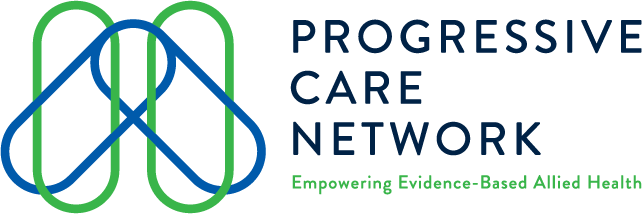FAQs
1. What is the Difference Between Chiropractic and Physiotherapy?
Traditionally, chiropractic was a system of treatment focused only on improving the motion of joints in the spine and extremities by providing an adjustment. Physiotherapy was traditionally a system of treatment aimed at resolving acute injury to the soft tissues (muscles, ligaments, and tendons) of the body. In modern times, these boundaries have blurred. The best results can be expected when a combination of therapies is used.
At Progressive Care Network, we have both chiropractors and physiotherapists on staff. They will employ a variety of treatments to aid your body in healing as rapidly and as thoroughly as possible.
For example, if you injure and inflame a joint in your wrist, the movement of the joint will be affected. The muscles controlling movement of that joint are then under extra strain to allow proper function of the wrist. Aching and tenderness will then arise in those muscles.
If we adjust the joint, but the muscles are still not functioning properly, you still have dysfunction. If we treat the muscles, but the joint is still restricted, there is still pain.
By combining therapies, we heal the entire complex, resulting in optimum healing, which is converted into great long-term outcomes by providing you with rehabilitation exercises to achieve full recovery.
2. What is a Chiropractic Adjustment?
A chiropractic adjustment is the application of a fast, shallow force (high velocity, low amplitude thrust) through one of the planes of movement of a joint. This aims to improve the range of motion of the joint, as well as affecting the nerves that feed and are fed by the joint complex.
In restricted joints, inflammation may arise. This results in altered movement patterns and, in the long term, degeneration in the joint and/or altered postural positioning. The adjustment may or may not be accompanied by a clicking sound. This is caused by gas being released in the joint, and can restore proper joint motion regardless of whether the clicking sound occurs.
3. Does Chiropractic Adjustment Hurt?
In general, no, chiropractic does not cause any pain. In fact, many people enjoy the feeling of a chiropractic adjustment. Some cases of acute injury may result in a slight sharp pain on adjustment. Other cases of chronic restriction may cause some achiness the day following a treatment. For the majority of patients, adjustments are pain free.
4. How Does Dry Needling (DDN) Work?
Trigger points are areas in a muscle which contain specific types of nerve fibres and affect the function of the muscle at large. When dysfunction occurs, these trigger points become active and painful.
Deep Dry Needling affects changes in painful trigger points in a few ways. Firstly, the mechanical force exerted by the needle can break up or stretch out tightly contracted fibres in a tight muscle band. Second, the nervous response to the needle being inserted results in reflex relaxation of these trigger points. And third, there is a biochemical response where hormones are released in response to the needle. This has a number of effects, including pain moderation and inflammation control.
